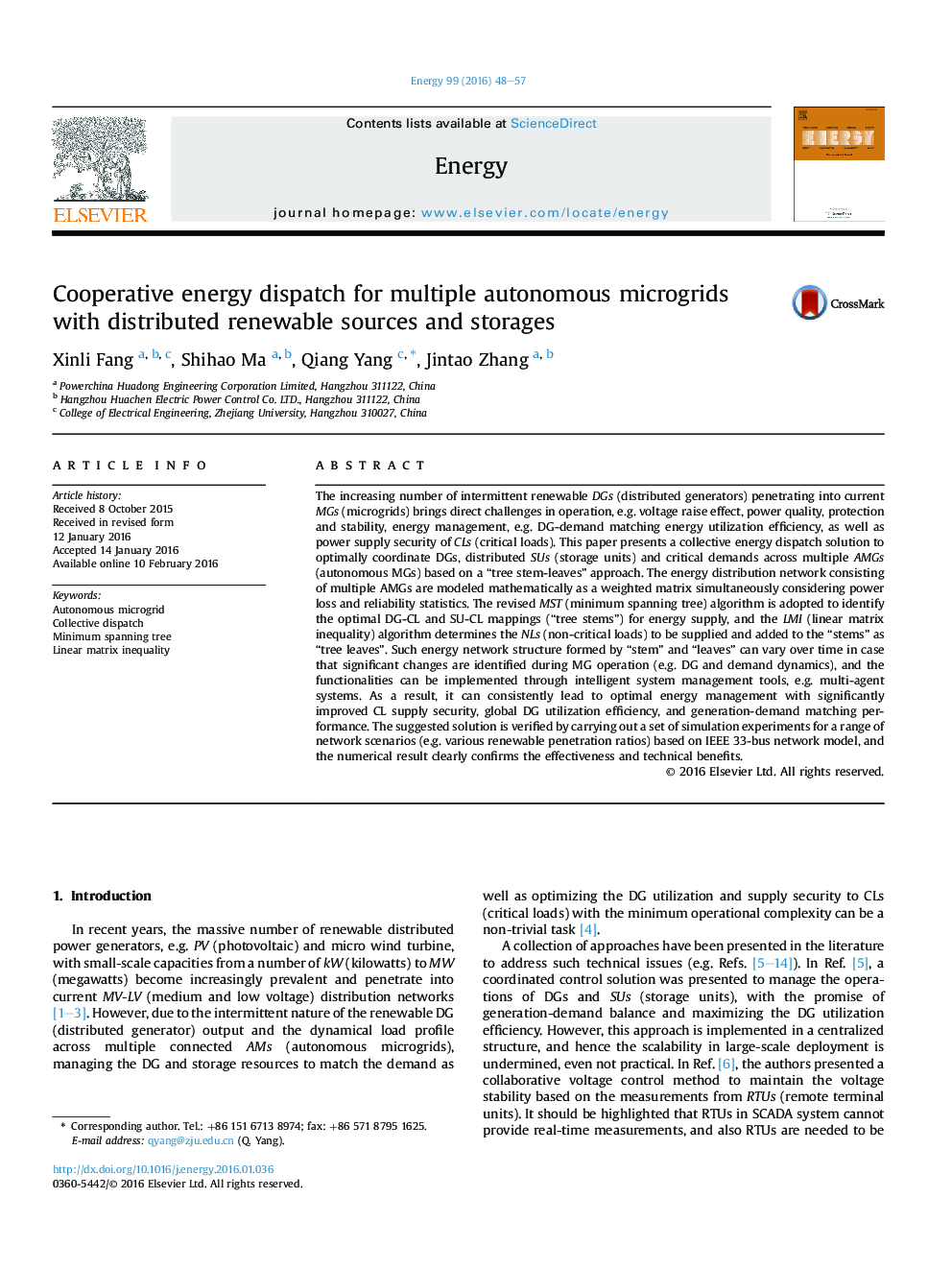| کد مقاله | کد نشریه | سال انتشار | مقاله انگلیسی | نسخه تمام متن |
|---|---|---|---|---|
| 1731315 | 1521449 | 2016 | 10 صفحه PDF | دانلود رایگان |
• A “tree stem-leaves” based optimal energy dispatch solution is proposed.
• DGs, storage units and demands are optimally coordinated across multiple microgrids.
• The DG utilization efficiency and supply security are significantly promoted.
The increasing number of intermittent renewable DGs (distributed generators) penetrating into current MGs (microgrids) brings direct challenges in operation, e.g. voltage raise effect, power quality, protection and stability, energy management, e.g. DG-demand matching energy utilization efficiency, as well as power supply security of CLs (critical loads). This paper presents a collective energy dispatch solution to optimally coordinate DGs, distributed SUs (storage units) and critical demands across multiple AMGs (autonomous MGs) based on a “tree stem-leaves” approach. The energy distribution network consisting of multiple AMGs are modeled mathematically as a weighted matrix simultaneously considering power loss and reliability statistics. The revised MST (minimum spanning tree) algorithm is adopted to identify the optimal DG-CL and SU-CL mappings (“tree stems”) for energy supply, and the LMI (linear matrix inequality) algorithm determines the NLs (non-critical loads) to be supplied and added to the “stems” as “tree leaves”. Such energy network structure formed by “stem” and “leaves” can vary over time in case that significant changes are identified during MG operation (e.g. DG and demand dynamics), and the functionalities can be implemented through intelligent system management tools, e.g. multi-agent systems. As a result, it can consistently lead to optimal energy management with significantly improved CL supply security, global DG utilization efficiency, and generation-demand matching performance. The suggested solution is verified by carrying out a set of simulation experiments for a range of network scenarios (e.g. various renewable penetration ratios) based on IEEE 33-bus network model, and the numerical result clearly confirms the effectiveness and technical benefits.
Journal: Energy - Volume 99, 15 March 2016, Pages 48–57
